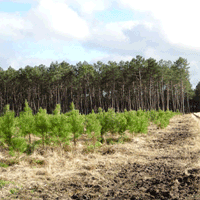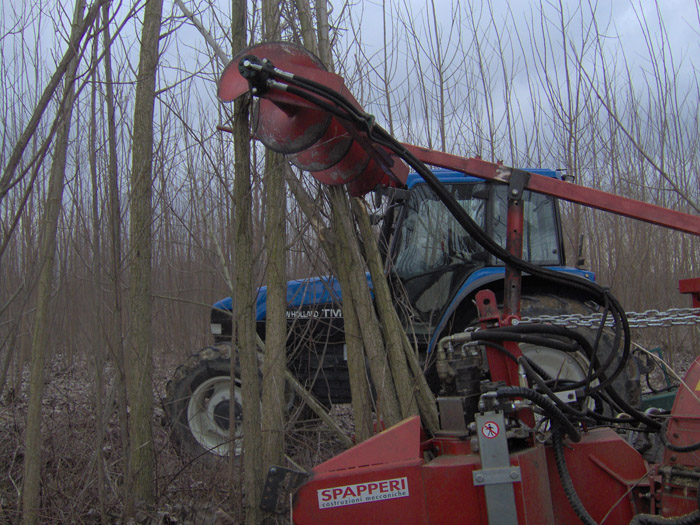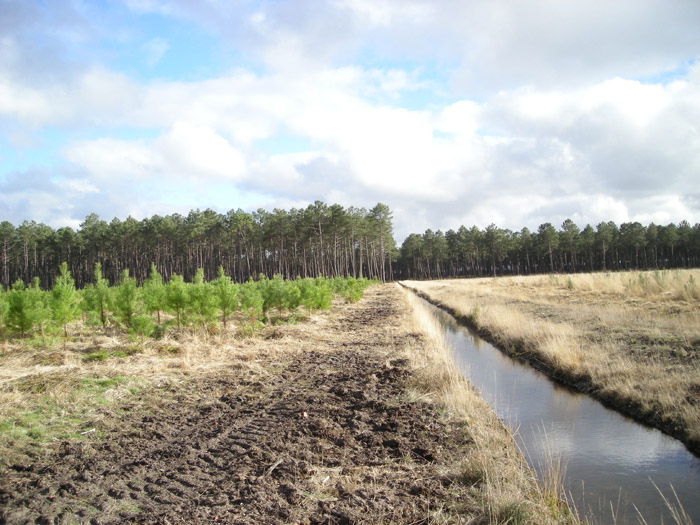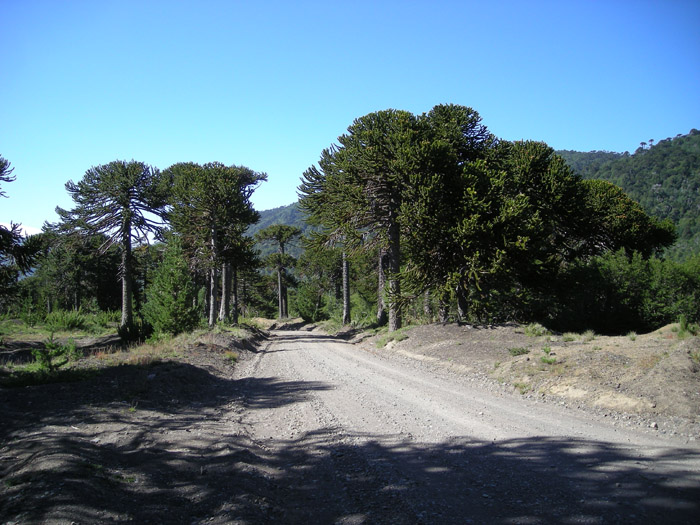
Change is in the air: future challenges for applied forest research
iForest - Biogeosciences and Forestry, Volume 2, Issue 2, Pages 56-58 (2009)
doi: https://doi.org/10.3832/ifor0492-002
Published: Mar 18, 2009 - Copyright © 2009 SISEF
Editorials
Abstract
Forests provide a wide range of benefits to people. Forest plantations on former agricultural land for commercial and restoration purposes may enhance ecosystem services, including biodiversity conservation and carbon sequestration. Incorporating these ecosystem services into resource management decisions is of paramount importance. Efforts towards the sustainable management of forest ecosystems for climate change mitigation give opportunities to establish a new relationship between researchers and forests. Growing and competing demands for food, biomass, timber, and environmental services is posing severe challenges to effective forest governance, considering the impact of global change. However, tree plantations can hardly match biological diversity and structural attributes of the original forest cover, which warrants for future sustainable mitigation through forest activities.
Keywords
Biodiversity conservation, Carbon sequestration, Climate change mitigation, Forest management
Recently, we visited a colleague, senior scientist working with an institute of the Italian National Research Council committed to biometeorological research. After our business meeting, during which we discussed about a possible common project on the impact of climate changes on forest ecosystems in the Mediterranean region, our colleague invited us to follow him in the underground floors of the building, where he proudly showed us his treasure: a recently acquired oven for heating the Institute, fed by wooden pellets. He told us that the whole building is now heated with some hundreds euros a month, against the several thousands disbursed formerly, and added that he is now doing research to understand how the process can be applied and ameliorated in a carbon sequestration context. Times have changed and forest research should focus on collaborative climate change mitigation strategies drawn up in parallel with measures to curb CO2 emissions.
Planning both the study of natural processes of long-term forest succession and the realization of guided management of short-term forest restoration is a wise thought. In this sense, a forceful (global?) forestation programme with fast-growing short-lived species would favour projects designed to provide carbon compensation. However, long-term carbon sequestration is better promoted by old-growth forests, with higher density and slower turnover of woody tissues. Plantations with fast-growing tree species on degraded lands can improve ecosystem services (including biological diversity conservation, climate change mitigation, and terra firma protection), whereas original forest succession is a dynamic process that can take centuries.
Restoring ecosystem services needs time and labour, which let us foresee for sustainable investments and knowledge communications. Efforts in regenerating forests should also re-establish new relationships between people and ecosystems. In tropical regions, for example, deforestation should be blocked to reduce carbon emissions. European countries should not go back to future forest over-logging for attaining biomass for energy. New forest plantation on former agricultural land combined with close-to-nature forest management and sustainable rural development would help our friend to heat his place while conserving forest ecosystems.
Global change incidence, as a matter of fact, is now broadly perceived (Obama helps…). What we should be doing now is research aimed at managing the consequences of climate changes. Nevertheless, the interest of scientists is still unbalanced towards studying impacts of global change, or struggling with adaptation strategies of forest ecosystems. Mitigation policy is in its infancy, at least in the perspective of forest researchers.
Global change is here and is the challenge for our efforts. Going back to our roots beyond global warming. Eventually, we are forest scientists faithfully committed to manage the forest ecosystems of the World. In a sustainable way.
Authors’ Info
Authors’ Affiliation
Dip.to di Scienze e Tecnologie per l’Ambiente ed il Territorio (STAT), Università degli Studi del Molise, Contrada Fonte Lappone, I-86090 Pesche (IS - Italy)
WSL Swiss Federal Institute for Forest, Snow and Landscape Research, Zurcherstrasse 111, CH-8903 Birmensdorf (Zurich - CH).
Corresponding author
Paper Info
Citation
Tognetti R, Cherubini P (2009). Change is in the air: future challenges for applied forest research. iForest 2: 56-58. - doi: 10.3832/ifor0492-002
Paper history
Received: Feb 22, 2009
Accepted: Mar 02, 2009
First online: Mar 18, 2009
Publication Date: Mar 18, 2009
Publication Time: 0.53 months
Copyright Information
© SISEF - The Italian Society of Silviculture and Forest Ecology 2009
Open Access
This article is distributed under the terms of the Creative Commons Attribution-Non Commercial 4.0 International (https://creativecommons.org/licenses/by-nc/4.0/), which permits unrestricted use, distribution, and reproduction in any medium, provided you give appropriate credit to the original author(s) and the source, provide a link to the Creative Commons license, and indicate if changes were made.
Web Metrics
Breakdown by View Type
Article Usage
Total Article Views: 50131
(from publication date up to now)
Breakdown by View Type
HTML Page Views: 41248
Abstract Page Views: 3543
PDF Downloads: 3777
Citation/Reference Downloads: 174
XML Downloads: 1389
Web Metrics
Days since publication: 6117
Overall contacts: 50131
Avg. contacts per week: 57.37
Article Citations
Article citations are based on data periodically collected from the Clarivate Web of Science web site
(last update: Mar 2025)
(No citations were found up to date. Please come back later)
Publication Metrics
by Dimensions ©
Articles citing this article
List of the papers citing this article based on CrossRef Cited-by.
Related Contents
iForest Similar Articles
Research Articles
Approaches to classifying and restoring degraded tropical forests for the anticipated REDD+ climate change mitigation mechanism
vol. 4, pp. 1-6 (online: 27 January 2011)
Research Articles
Voluntary carbon credits from improved forest management: policy guidelines and case study
vol. 11, pp. 1-10 (online: 09 January 2018)
Research Articles
Identifying priority conservation areas for above-ground carbon sequestration in Central Mexico
vol. 10, pp. 923-929 (online: 07 December 2017)
Research Articles
An assessment of climate change impacts on the tropical forests of Central America using the Holdridge Life Zone (HLZ) land classification system
vol. 6, pp. 183-189 (online: 08 May 2013)
Research Articles
Seeing, believing, acting: climate change attitudes and adaptation of Hungarian forest managers
vol. 15, pp. 509-518 (online: 14 December 2022)
Research Articles
Potential impacts of regional climate change on site productivity of Larix olgensis plantations in northeast China
vol. 8, pp. 642-651 (online: 02 March 2015)
Technical Reports
The treatment of land use, land use change and forestry in the post-2012 climate agreement: a perspective from non-Annex I Parties
vol. 3, pp. 56-58 (online: 17 May 2010)
Research Articles
Assessing food sustainable intensification potential of agroforestry using a carbon balance method
vol. 12, pp. 85-91 (online: 24 January 2019)
Research Articles
Predicting the effect of climate change on tree species abundance and distribution at a regional scale
vol. 1, pp. 132-139 (online: 27 August 2008)
Review Papers
Carbon neutrality of forest biomass for bioenergy: a scoping review
vol. 16, pp. 70-77 (online: 05 March 2023)
iForest Database Search
Search By Author
Search By Keyword
Google Scholar Search
Citing Articles
Search By Author
Search By Keywords
PubMed Search
Search By Author
Search By Keyword












